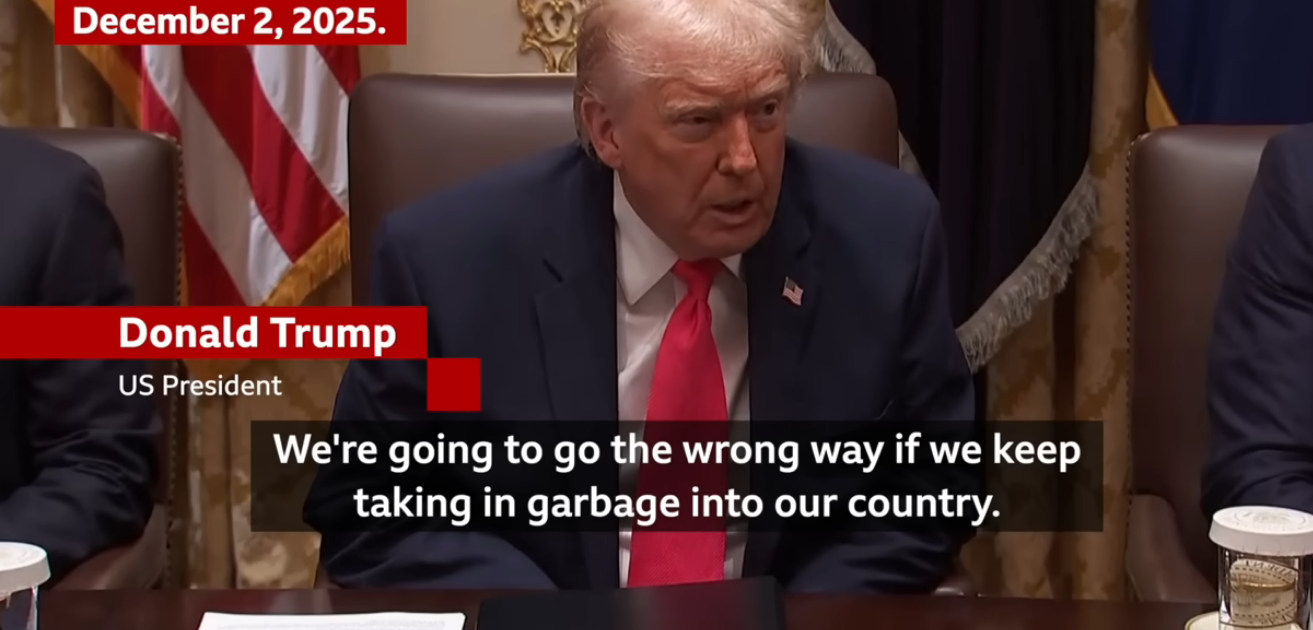By Carolyn Jenkins and Michael Howard
Entering the museum, a sign in bold letters reads: “The Journey Toward Freedom – 15th-21st Centuries.”
“African Americans have had an uneven history in this country. They came initially to America to support the nation’s economic development. But they bought with them a spirit that had a powerful impact.
Their struggles for human rights forced the nation to rethink the meaning of freedom and equality. Both America and African Americans were profoundly shaped by this process. You are about to witness how these interactions unfolded over more than 400 years.”
This introduction to the museum wasn’t read as we were ushered through the entrance. Later that day, after reading the introduction we had taken a photo of, the outrage set in. This statement was a blatant insult to the millions of Africans drug out of Africa in shackles, forced by the sharp sting of the lash to work and build this country under the worst kind of slavery known to mankind – chattel slavery.
Part two of this review will address this sharp contradiction as to what is stated here and what is actually seen at the museum.
Here’s some background: Decades in the making, the newly opened National Museum of African-American History and Culture (“NMAAHC”) struck an impressive pose. It is a testament to the people of African ancestry’s unrelenting struggle against racism and economic exploitation.
The online description goes further and says, “…its design represents the past, present and future of the African-American experience in ways that are both tangible and symbolic.” Civil Rights icon, Congressman John Lewis, worked for many years to have legislation passed to construct the museum on the National Mall. In 2003, George W. Bush signed the legislation to move forward with the construction.
At the opening ceremony, he said, “A great nation does not hide from its history, it faces its flaws and corrects them.” Arched on a hill at the corner of Constitution Avenue and 15th Street in Washington, D.C., the museum is surrounded by several national monuments. To the north, the White House is located. Rising to the East beyond the National Mall and other Smithsonian museums is the U.S. Capitol. To the South and West are the Thomas Jefferson, Martin Luther King Jr., Abraham Lincoln, and George Washington monuments. The founding director of the Museum, Lonnie G. Bunch III, wanted the museum to be different from any of the others on the Mall.
With this aim in mind, he commissioned the design team of David Adjaye and lead architect Philip Freelon to design the structure. The architects synthesized a variety of distinctive elements from Africa. The Adjaye team pays homage to the intricate iron craftsmanship created by enslaved African-Americans in New Orleans and Charleston, S. C. and elsewhere.
The angular bronze structure is reminiscent of Egyptian pyramids. Visualize an upside-down metal trapezoid in a bronze cutout pattern, and you have our museum. A docent with the African Museum, Paula Coleman, describes the museum like this, “when lit up at night, the museum is ethereal.”
On level four of the museum, there is a wood carving by early 20th century Yoruban artist Olowe of Ise, which shows a man with a crown similar to the shape of the building. Adjaya sent an image of the sculpture to his collaborators. No other ideas were considered. Facing this sign is an equally large collage of famous and unsung African-Americans. Included in the giant collage is Thurgood Marshall, Zora Neal Hurston, James Baldwin, a group photo of a post-slavery African-American family, and many others.
An elevator ride, replete with the operator, took his turn describing our descent to the 15th century. Foreboding, yet somber, was his message to the packed rider, as we moved from 2016 to 1400. Starting at the slave trade, our first four hours paused at the Pullman porter’s railroad sleeping car.
All along the way, we read authentic documents evidencing enslavement and resistance. We shared narratives, videos, press clippings, garments, and shared thoughts with fellow visitors. Our pause included lunch in the Sweet Home Café in the Museum, where we conversed about what we had just seen.
After dining, we continued. Some of the exhibits were a testament to the African-American resistance to oppression, while others give justification for distrust of our criminal-justice system. For instance, the actual bible used by freedom fighter, Nat Turner, stands as a symbol of his determination and faith. The scarf worn by the famous liberator, Harriet Tubman is on display.
Frederick Douglas, a great writer and orator of the 1800s, urged the enslaved Africans to take up arms against the South. There are several portraits of him in the museum. The murder of 14-year-old Emmitt Till in 1955 speaks volumes to the distrust of the American criminal-justice system. The casket Emmitt Till was initially buried in is on display in a separate room dedicated to this racist killing. Emmitt’s mother wanted the world to see what had been done to her son. This crime went unpunished. There is a photo of the nine Scottsboro boys, who were falsely accused of raping two white women.
You can’t miss the bright blue body, yellow wings and red strips on the tail, retrofitted Boeing PT skillfully hung from the ceiling, depicting a plane in flight. The plain was used during World War II to train the first African American military pilots at a segregated flying school in Alabama. There are several photos of the Tuskegee Airmen. If you wish to share your personal history, there’s a place for videotaping too.
There’s a booth marked “Share Your Story” on the entrance door. You can’t possibly see all the museum has to offer in one day. The National African-American Museum of History and Culture boast 85,000 sq. ft. of exhibit space, 3,000 objects, 12 exhibitions, 13 different interactives with 17 stations, and 183 videos housed on five floors.
A point of interest – those who will visit, and those who can stay and visit again, is a huge plus. We can’t respond to the demographics, but a D.C., Maryland, Virginia resident has a distinct advantage. Unlike the calls to “March on Washington,” this is a permanent structure, prompting frequent travel.
The galvanizing, organizing and use of instruction fostered growth in transportation and camaraderie. Where are our black bus companies to take advantage of this influx?
The healing process for 400 years of brutal racist treatment can begin here! Reserve timed passes at nmaahc.si.edu/visit/passes.





